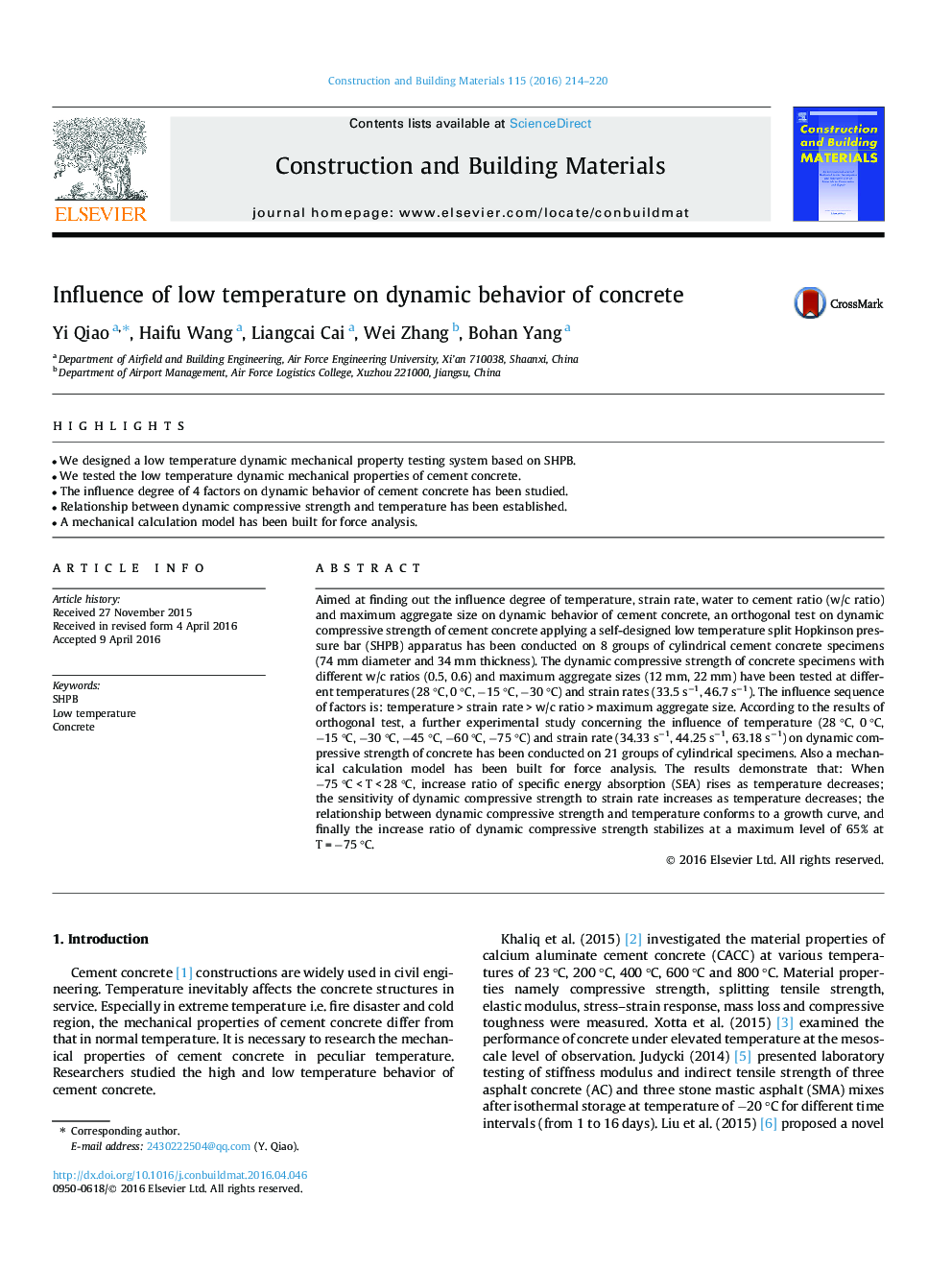| Article ID | Journal | Published Year | Pages | File Type |
|---|---|---|---|---|
| 6718848 | Construction and Building Materials | 2016 | 7 Pages |
Abstract
Aimed at finding out the influence degree of temperature, strain rate, water to cement ratio (w/c ratio) and maximum aggregate size on dynamic behavior of cement concrete, an orthogonal test on dynamic compressive strength of cement concrete applying a self-designed low temperature split Hopkinson pressure bar (SHPB) apparatus has been conducted on 8 groups of cylindrical cement concrete specimens (74 mm diameter and 34 mm thickness). The dynamic compressive strength of concrete specimens with different w/c ratios (0.5, 0.6) and maximum aggregate sizes (12 mm, 22 mm) have been tested at different temperatures (28 °C, 0 °C, â15 °C, â30 °C) and strain rates (33.5 sâ1, 46.7 sâ1). The influence sequence of factors is: temperature > strain rate > w/c ratio > maximum aggregate size. According to the results of orthogonal test, a further experimental study concerning the influence of temperature (28 °C, 0 °C, â15 °C, â30 °C, â45 °C, â60 °C, â75 °C) and strain rate (34.33 sâ1, 44.25 sâ1, 63.18 sâ1) on dynamic compressive strength of concrete has been conducted on 21 groups of cylindrical specimens. Also a mechanical calculation model has been built for force analysis. The results demonstrate that: When â75 °C < T < 28 °C, increase ratio of specific energy absorption (SEA) rises as temperature decreases; the sensitivity of dynamic compressive strength to strain rate increases as temperature decreases; the relationship between dynamic compressive strength and temperature conforms to a growth curve, and finally the increase ratio of dynamic compressive strength stabilizes at a maximum level of 65% at T = â75 °C.
Keywords
Related Topics
Physical Sciences and Engineering
Engineering
Civil and Structural Engineering
Authors
Yi Qiao, Haifu Wang, Liangcai Cai, Wei Zhang, Bohan Yang,
